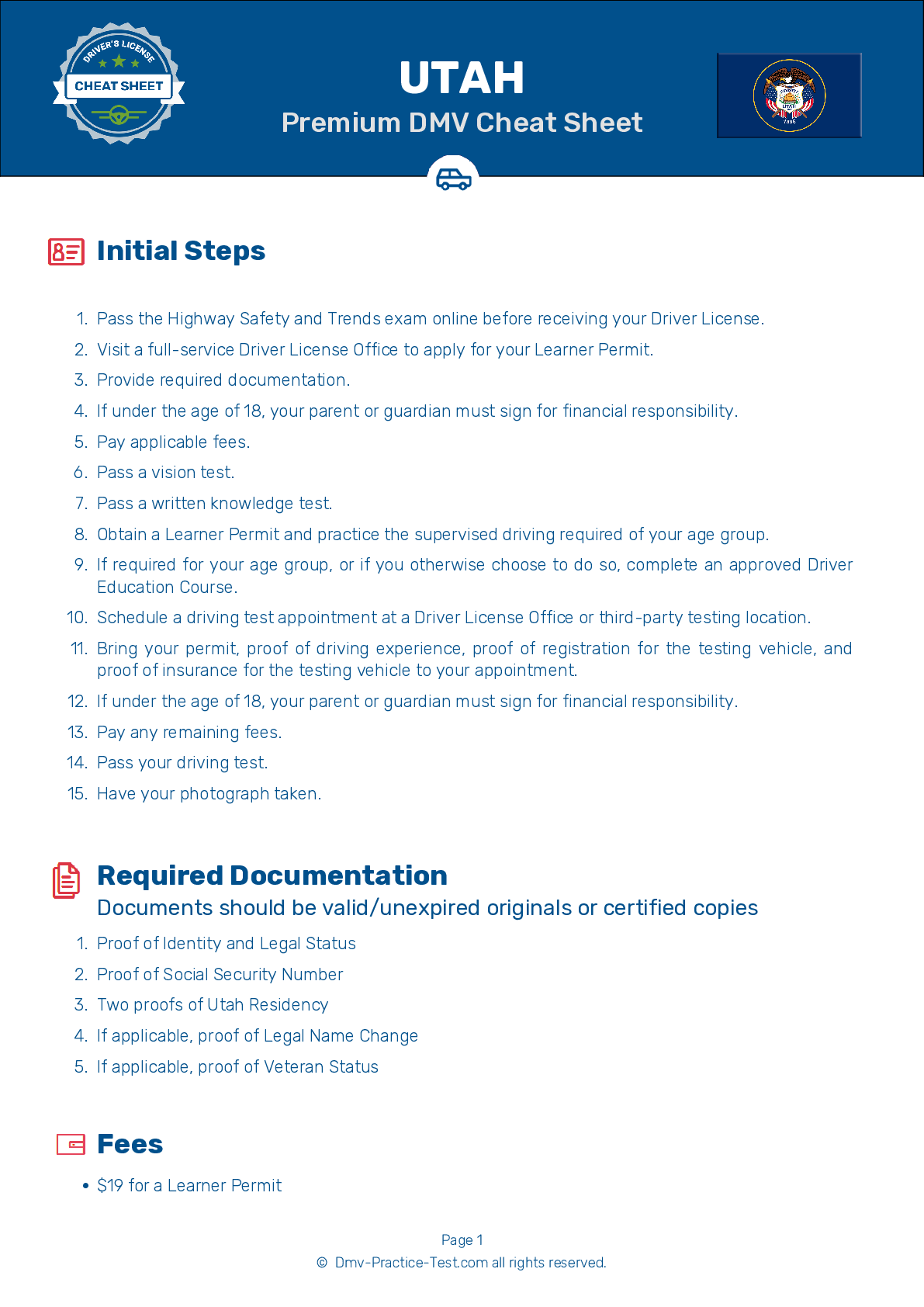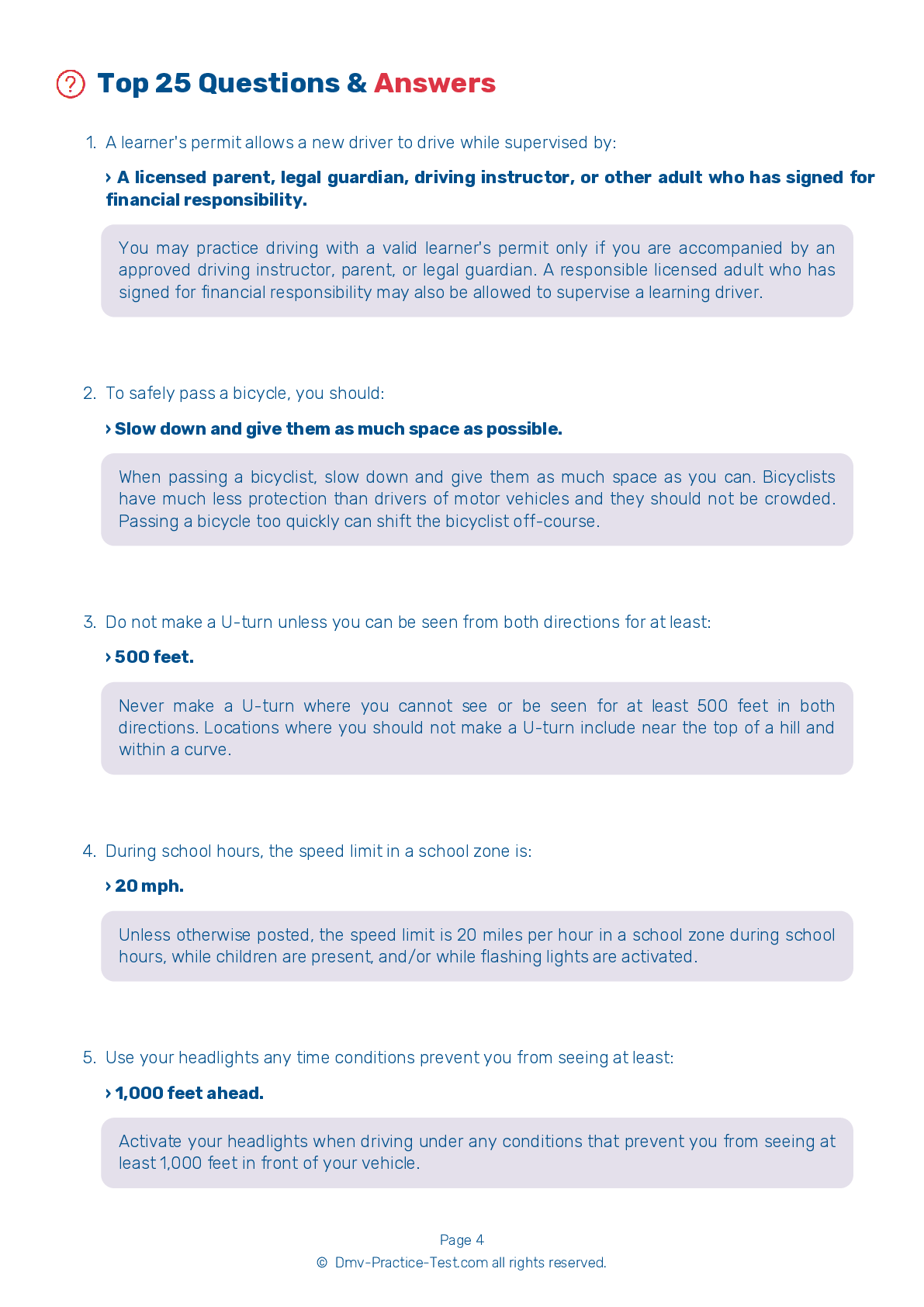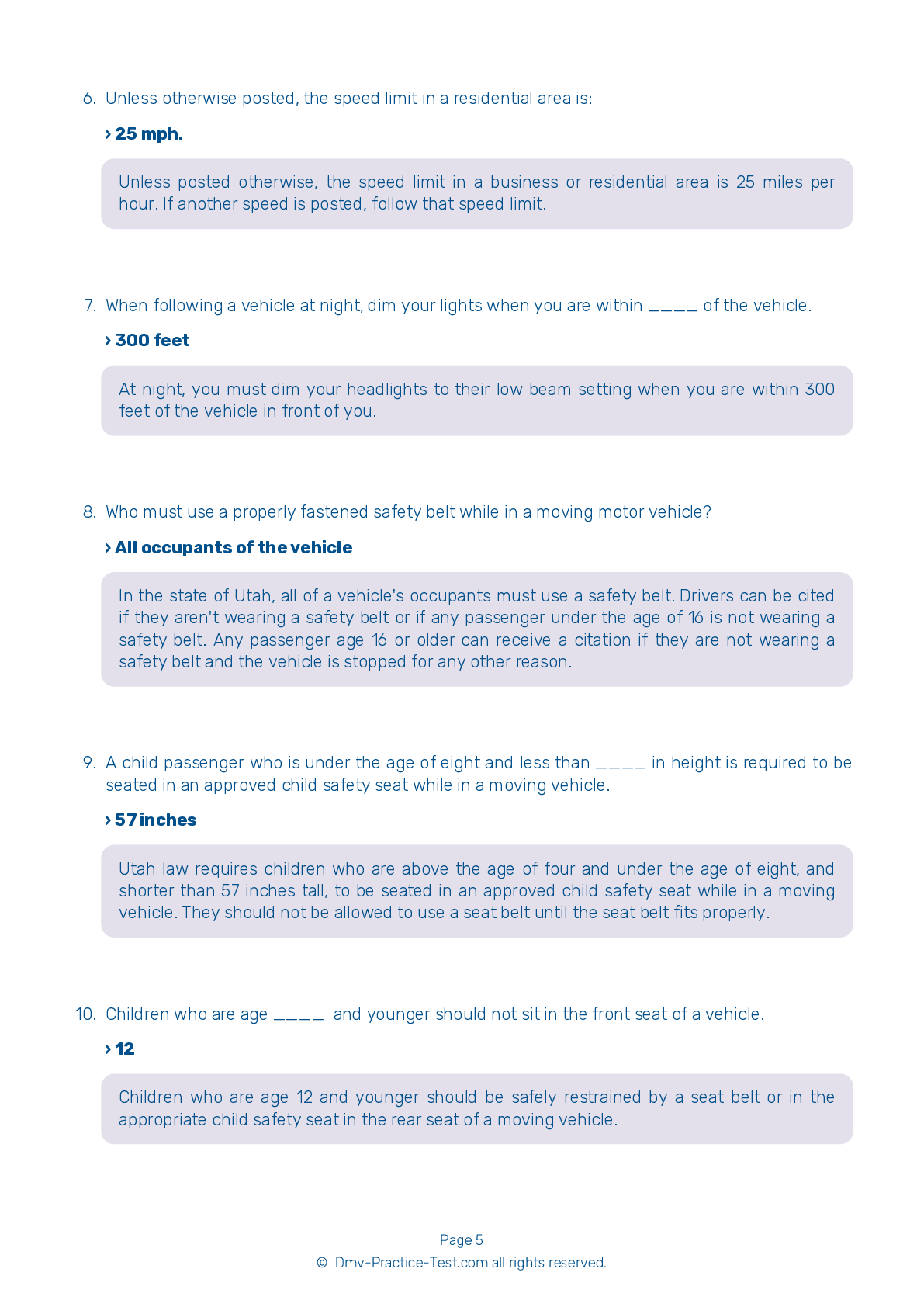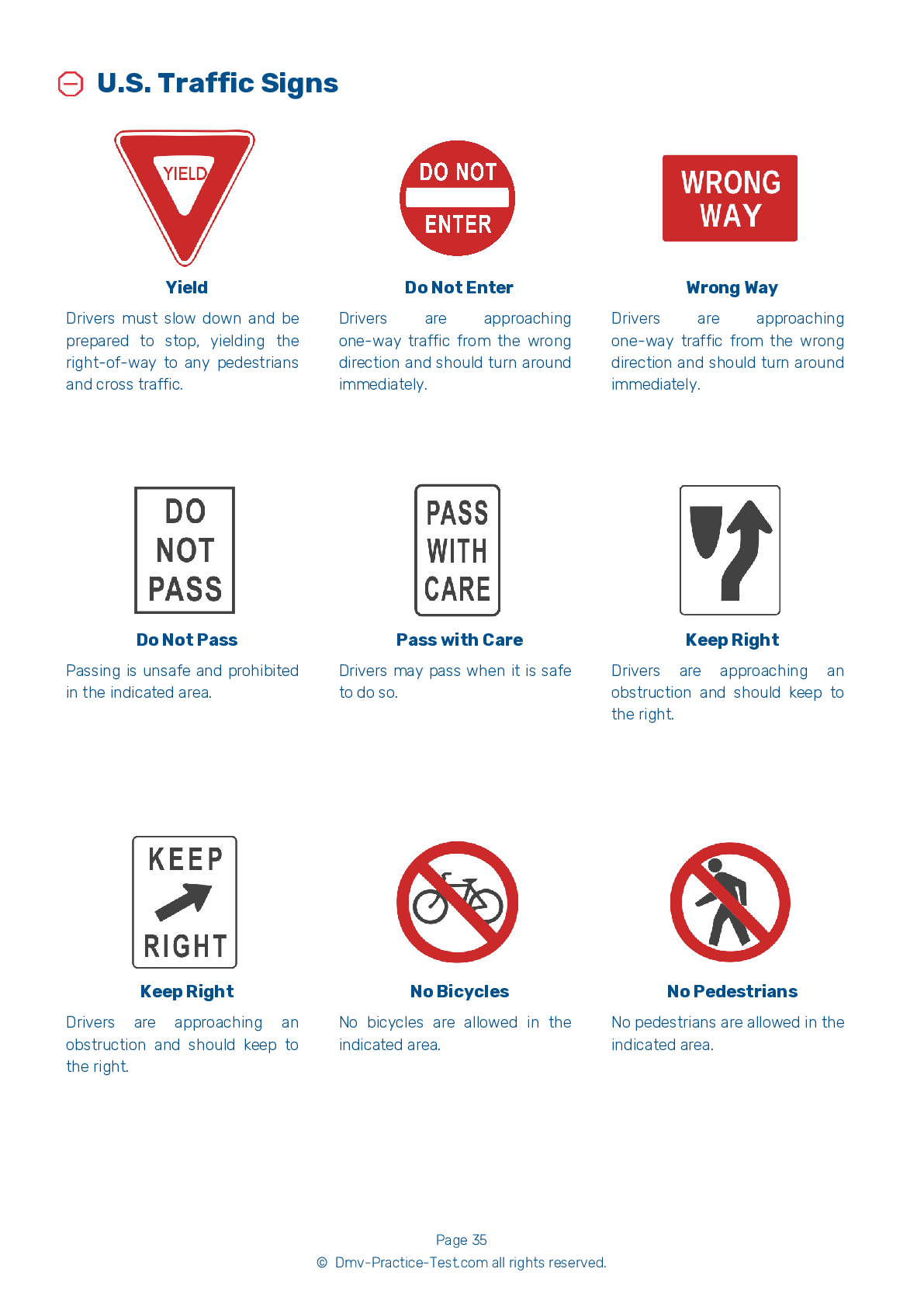FREE Utah DMV Practice Test #5
The practise exams for the Utah DMV have been updated for January 2025. It comprises questions based on the most important traffic signals and laws for 2025 from the Utah Driver Handbook. To study for the DMV driving permit test and driver's licence exam, use actual questions that are very similar (often identical!) to the DMV driving permit test and driver's licence exam.
Each question on the practise exam has a tip and explanation to help you recall the ideas. Questions about traffic rules, traffic signs, and driving statutes, as well as knowledge from the Driver Handbook, will be included in the written portion of the official Utah DMV test.
You must properly answer 20 of the 25 questions to receive a passing mark. Use the Utah Department of Motor Vehicles' practise exam to help you prepare for your instruction permit or driver's licence.
The DMV exam is offered in a variety of languages.
Using any form of testing help will result in an automatic fail, and the DMV may take further action against your driver's licence, so avoid it.
1 . When changing lanes on a highway, you should:
Any time you want to change lanes, you should properly signal your intentions well in advance, check your mirrors, and check your blind spot. You can check your blind spot by glancing over your shoulder in the direction that you plan to move.
2 . When you see or hear an emergency vehicle coming, you should:
When driving on a two-lane roadway or undivided highway, you must yield to an emergency vehicle using its lights and/or siren, regardless of the direction from which it is approaching. Immediately drive as near as possible to the right side of the road and stop, taking care not to stop within an intersection.
3 . What should you be most concerned about when you see this sign?
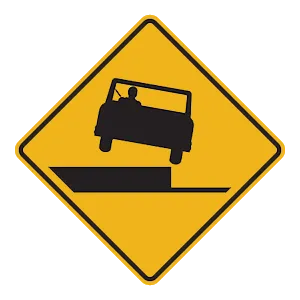
This sign indicates that the shoulder is lower than the road in the area ahead. If you drift off of the roadway and one wheel drops onto a low shoulder, do not slam on the brakes or steer sharply to try to get back onto the roadway. This could easily cause you to lose control of your vehicle.
4 . You must stop for a school bus:
You must stop when approaching a school bus that is displaying flashing red lights while stopped to pick up or drop off children. On a two-lane road, traffic moving in both directions must stop and remain stopped as long as the red lights near the top of the bus are flashing and/or the stop arm on the left side of the bus is extended.
5 . Braking distance is affected by:
Factors that can affect braking distance include how fast your vehicle is traveling, the condition of your brakes and tires, and the condition of the pavement.
6 . While driving, your wheels slip off the edge of the road. You should:
If your vehicle begins to leave the road, continue to drive with the wheels off the pavement and reduce your speed by gently applying the brakes. When at a safe speed, turn the steering wheel to return to the pavement. Do not attempt to force your vehicle back onto the pavement by sharply turning the steering wheel.
7 . This sign means:

Eight-sided traffic signs warn drivers that they must stop and yield the appropriate right-of-way at an intersection. Drivers may proceed when it is safe to do so.
8 . This road sign means:
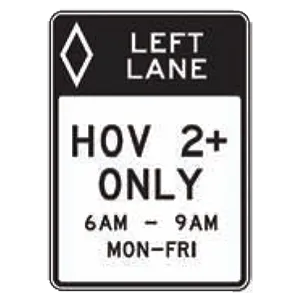
This sign marks a high occupancy vehicle (HOV) lane. HOV lanes are reserved for use by buses and vehicles with a driver and one or more passengers, as indicated on the sign.
Need Car Insurance? No problem!
Compare the best rates in Utah and find a personalized policy that meets your needs.
1. Are You Currently insured ?
2. Married ?
3. Do you own your Home?
4. Do you have more than 1 car ?
5. Have you or a Family Member Honorably Served in U.S. Military ?
6. Your Name
7. Age
8. Zip code
IMPORTANT REMINDER:Auto Insurance is Mandatory to drive in Utah. Get covered before you hit the road to avoid any fines.
Ranked by best match
